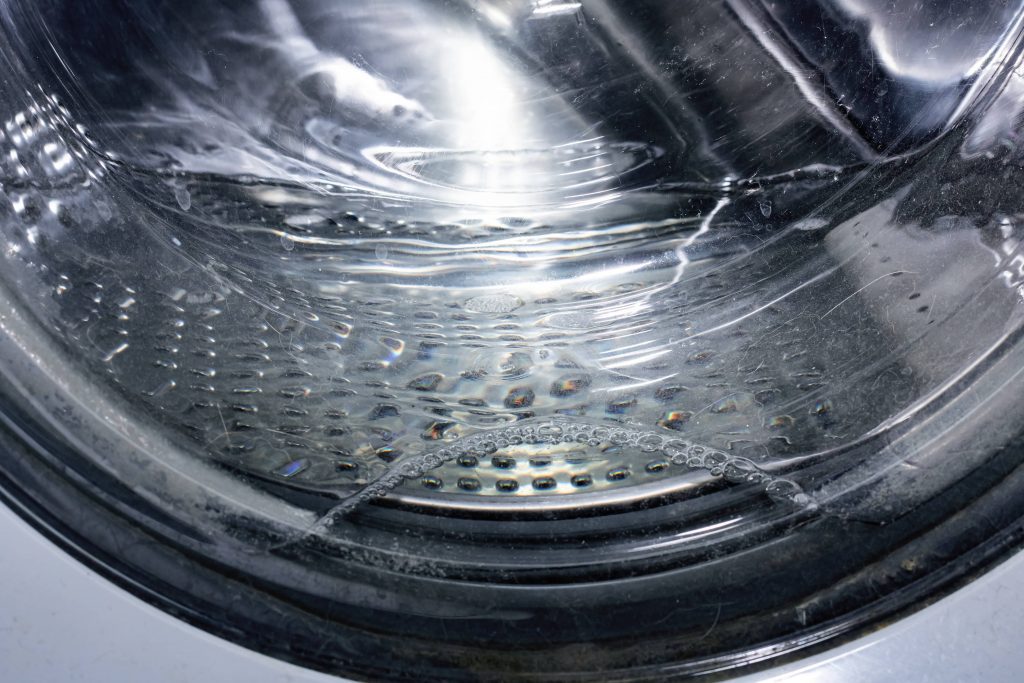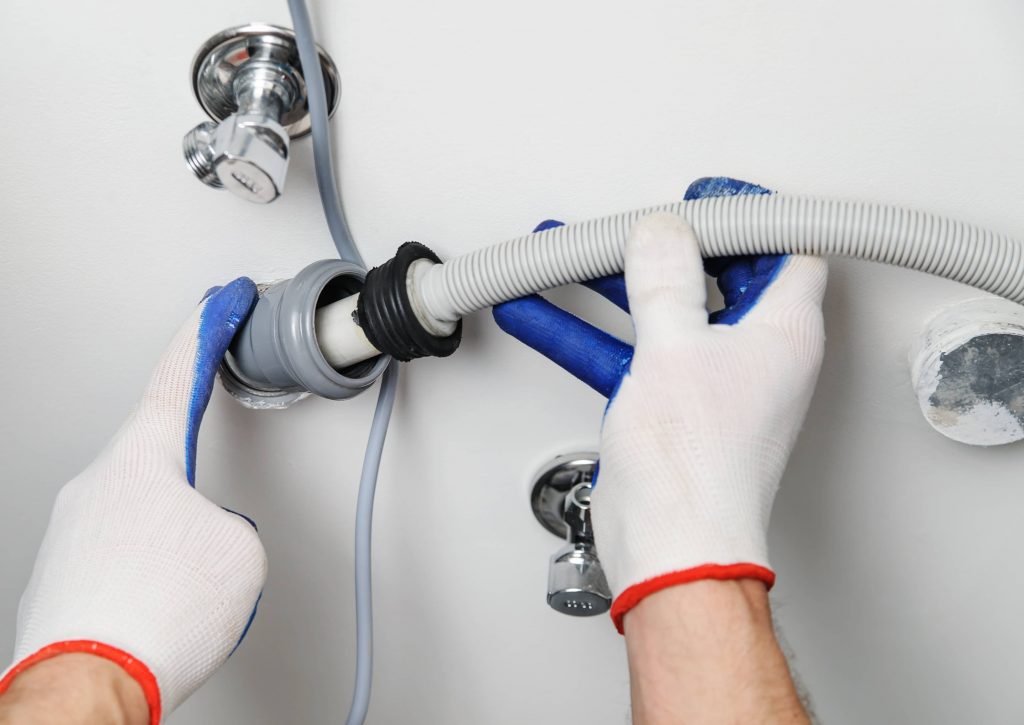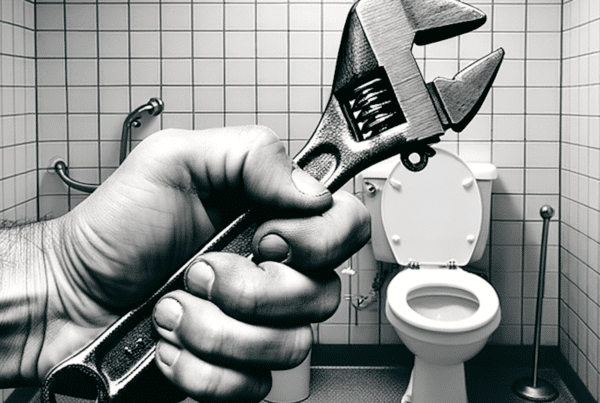
Hearing gurgles from your laundry room can be unsettling, especially when followed by the sight of water pooling around your washing machine. You’ve quickly turned off the water, but the problem persists – water trapped in the washer, a drainpipe that refuses to do its job. Wondering how to vent a washing machine drain pipe? You’ve come to the right place.
It’s a straightforward process that involves setting up a standpipe that links to the P-trap and ensuring a clear path to the main drain. However, if you’re unsure about your plumbing skills, this is a prime opportunity to enlist the expertise of a licensed plumber.

When to Vent a Washing Machine Drain Pipe
Recognizing when to vent a washing machine drain pipe is crucial for keeping your laundry room free from water issues. If you’re experiencing slow drainage, water backup, or those disconcerting gurgling noises, it’s time to assess your venting situation. Proper venting is not just a nicety—it’s essential for the health of your home’s plumbing system.
A well-vented drain pipe allows air to follow the water, promoting a smooth flow. Without this air, you’ll notice your machine struggles to empty, and water may even siphon back into the unit or onto your floor. These symptoms signal that your system is gasping for air, quite literally.
The standpipe setup, integral to this process, must reach high enough to prevent overflow, yet be short enough to allow for efficient venting. The P-trap, which sits below, plays defense against sewer gases, but without a vent, its water seal could be siphoned away, defeating its purpose.
So, when should you vent your washing machine’s drain pipe? The answer is always. Building codes typically require it, and your machine’s performance relies on it. If you’re installing a new washer or noticing signs of poor drainage with an existing setup, don’t overlook the venting. It’s a small component with a big impact.
How to Properly Vent a Washing Machine Drain Pipe
Ensuring your washing machine’s drainage system breathes correctly is non-negotiable for optimal function. Let’s cut through the complexity with a straightforward guide to venting your washing machine drain pipe:
Gather Your Tools and Materials
Kickstart the process with the right gear. You’ll need:
- PVC pipes (the right diameter as per code)
- A P-trap
- Vent pipes
- Hacksaw
- Pipe glue
- Tape measure
Check the Code
Your local building codes are the rulebook for your venting adventure. They outline the specific details for pipe dimensions and distances. Stick to the rules to ensure your setup is up to scratch.
Plotting the Vent Path
Map out the shortest, most unobstructed path from your washing machine to the main vent stack. Efficiency is key here; a well-planned route reduces the risk of complications.
Standpipe and P-trap Installation
Position your standpipe to stand tall against overflows but within the sweet spot for effective venting. Pair it with a properly installed P-trap to keep those sewer gases at bay.
Vent Pipe Connection
The vent pipe should rise above your washing machine’s overflow level and maintain a steady slope towards the main vent stack to ensure smooth sailing for wastewater and airflow.
Secure and Seal
Lock in your pipes with the right fittings and seal them securely with pipe glue. This step isn’t just about preventing leaks; it’s about ensuring long-term durability.
Test the Waters
Finally, run your washing machine to put your new venting system to the test. Keep an eye out for efficient drainage and a gurgle-free cycle.

Other Recommended Maintenance
Regular checks and cleaning are crucial for preventing blockages and odors, and ensuring the longevity of your appliance. To start, keeping an eye on the standpipe and P-trap is a good practice. These components can accumulate lint, debris, and soap scum over time, leading to potential clogs. Cleaning them periodically can help maintain a clear path for wastewater.
It’s also wise to inspect the hoses connected to your washing machine. Look for signs of wear, such as cracks or blisters, which could suggest it’s time to replace them. Weak hoses are prone to bursting and can cause significant water damage in your home. Furthermore, checking for leaks not only in the hoses but also at the connection points can help catch issues early on. A small drip can quickly escalate into a larger problem if not addressed promptly.
Another aspect of maintenance involves the detergents and fabric softeners you use. Excessive suds can contribute to the slow draining of water and even lead to siphoning issues. Using high-efficiency detergents designed for your machine type and following the recommended amounts can prevent these complications.
Lastly, consider the overall use of your washing machine. Avoid overloading it, as this can strain the motor and lead to imbalances that affect the drainage system’s performance. Ensuring that your laundry loads are balanced and within the machine’s capacity can contribute significantly to the maintenance of the drain system.
When to Call a Professional
Navigating the murky waters of home plumbing can often be a DIY affair, but there are times when calling in a professional isn’t just a convenience—it’s a necessity. Recognizing these moments is crucial for the well-being of your home’s plumbing infrastructure and can save you from a deluge of future expenses and inconveniences.
When your washing machine drain system signals distress through persistent slow drainage, water backup, or those persistent gurgling sounds even after you’ve given venting your best shot, it’s time to step back and dial a licensed plumber. These symptoms can be harbingers of deeper, more complex issues, such as obstructions deep within the drain line, venting problems that are not accessible without professional tools, or even issues with the main sewer line.
In addition, if during your routine maintenance, you discover leaks that are not easily remedied with a simple tightening of a connection, or if hoses or pipes show signs of significant wear and degradation, these are tasks best left to the seasoned hands of a plumbing expert. The same goes for any visible water damage or mold around the washing machine area, which could indicate an ongoing leak and the need for a thorough investigation.
Moreover, if you’re not confident in your understanding of local building codes or feel uncertain about the specifications for your washing machine’s drainage system, enlisting professional help can ensure that your setup not only meets legal requirements but also operates at peak efficiency.
Conclusion
In essence, ensuring your washing machine’s drain pipe is properly vented is key to optimal appliance function and home safety. A correctly vented system means effective water flow, no back-ups, and quiet operation. Embrace the role of vigilant homeowner by staying on top of maintenance, and recognize when complexities escalate beyond the DIY scope, signaling it’s time for a professional’s expertise.
With these guidelines in hand, you’re equipped to maintain a smoothly running washing machine, guaranteeing you peace of mind and a laundry routine that stays uninterrupted. For assistance with your home’s plumbing system or a comprehensive inspection, reach out to the experts at All Coast Inspections today.



